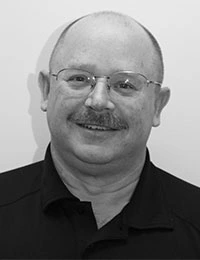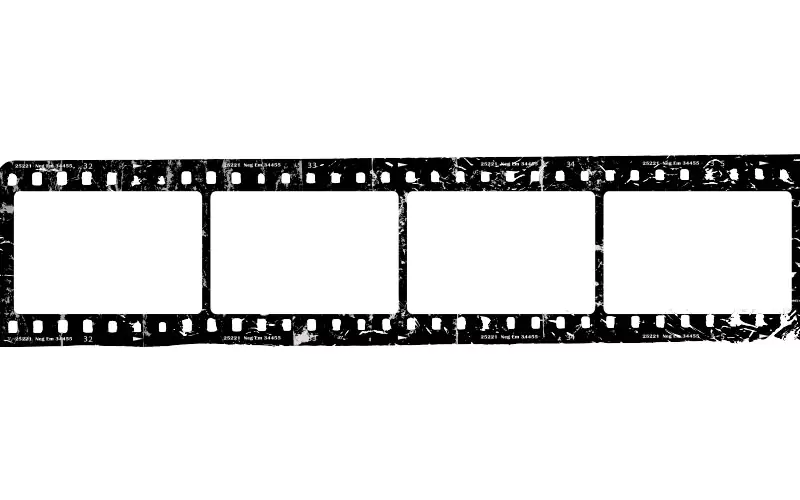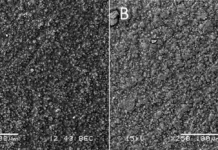Been watching a little more TV than usual recently? When channel surfing, do you have some favorite movies that you will watch even if you have seen them a dozen or more times before? Do you know some of the lines better than the characters? The column this quarter looks at movie quotes that could be used to start a guidebook on UV measurement and process control.
1. “You gotta ask yourself a question: ‘Do I feel lucky?’ Well, do ya, punk?” Dirty Harry
The surest way to guarantee you will attract UV curing problems is to ignore good process measurement practices and roll the dice on your operating conditions. Sooner, rather than later, the “if it ain’t broke don’t fix it” approach is destined to break, particularly when this laissez-faire approach applies to UV source maintenance and the care/calibration of your radiometer.
2. “Life is like a box of chocolates. You never know what you’re gonna get.” Forrest Gump
UV curing, like most complex processes, can be characterized by the amount of variability (or in mathematical terms, the dispersion or standard deviation) of many critical variables. Variables that can affect the outcome include UV source (type, wavelength, irradiance, energy density, bulb age), process (speed/belt uniformity, lamp height, lamp/focus, reflector cleanliness), coating (age, thickness) and/or substrate (dyne levels). Those who run a well-documented process know what results to expect and have established lower and upper process window thresholds. Consistent UV data collection (radiometer and/or real-time measurements) and control of the other variables minimize unwanted surprises. As pointed out in several previous columns, it’s important to use your radiometer within its design specifications.
3. “How many times do I have to teach you: Just because something works doesn’t mean it can’t be improved.” Black Panther
But why stop at establishing a UV cure window that just prescribes what is necessary to get an acceptable result? The best operators are those who perform a series of controlled experiments to establish the best or optimum settings for achieving the best results. Best could be the lowest film build, fastest line speed, lowest energy consumption or other process variable that provides superior performance of the most economical process.
4. “Houston, we have a problem.” Apollo 13
Of course, even the most well engineered solutions don’t always go as planned. Operators can make unintentional errors, and equipment sometimes breaks unpredictably. It is at these times knowing when and where to get help becomes important. However, for help to be timely and efficient, having reliable data to share will make it easier to obtain expert advice.
5. “What we have here is failure to communicate.” Cool Hand Luke
One of the major benefits of proper measurement technique is that everyone working on your UV process can speak the same language. Suppliers of formulations (ink, coating, adhesive), sources, system/presses and substrates – and your R&D staff, lab technicians and plant personnel – all should be able to communicate with each other.
Without data, troubleshooting is hit-or-miss. The better the data, the easier the troubleshooting. If the parameters under which the data were obtained are unknown, it can create a confusing and inefficient tower of babble across the supply chain. Record the conditions in detail, including the location (line number), lamp type, radiometer make and model, irradiance, energy density and operating conditions such as line speed, lamp distance, time and temperature. Avoid poorly specified processes in which process values are not tracked. I often get phone calls when something has gone wrong. Most situations can be categorized into one of three buckets:
- Lack of source maintenance or failures that happen naturally as components age
- Human-related errors unintentionally caused by operators
- Improper collection of data, use or care of the radiometer
6. “She never gets old! Marcee can’t be real; she never gets old!” A Beautiful Mind
Process equipment degrades, and UV lamps age. The ends of mercury arc lamps can blacken, and the clarity of the quartz can become cloudy (vitrify), causing a drop in the UV levels. Reflectors get dirty, oxidize and corrode. Power supply transformers and capacitors dry out and fail. Magnetrons in microwave systems fail. Mercury arc lamps, especially those with additives (doped) like iron or gallium can change their spectra over time. LED arrays can degrade if they are not properly cooled. The result of aging can be a gradual deterioration detectable over time or a quick, unpredictable failure of a component.
7. “What we do is, if we need that extra push over the cliff, you know what we do? Put it up to eleven.” Spinal Tap
Human-related errors can involve someone “turning things up.” The power supply is “turned up” to try and compensate for aging bulbs or dirty reflectors. The conveyor speed is “turned up” to try and meet needed production capacity. Human-related errors also can involve “doctoring” the formulation to attempt to get cure/better cure. These shortcuts usually have consequences like under-cured parts and premature equipment failure.
8. “Here’s looking at you kid.” Casablanca
Other operator mistakes affect UV curing as well. For instance, even those plants that regularly monitor and inspect their UV lamps and clean their reflectors can accidently fail to leave their UV equipment properly positioned. Since UV curing almost always involves good line-of-sight alignment between the UV source and the curing surface, a mispositioned lamp can fail to provide adequate cure. Similarly, placing a lamp too far from – or too close to – the target can result in problematic changes of irradiance. The same is true of correct radiometer placement. Comparing measurements taken in different locations makes it impossible to observe any trend in UV performance. Good operators establish procedures that reduce this variability by taking their readings in the same spot(s) every time.
9. “Only one thing alive with less than four legs can hear this frequency, Superman, and that’s you.” Superman
Your process is most efficient when the chemistry is matched to the UV source. All UV sources are not created equal. For broadband sources, be attentive when replacing bulbs to ensure that the same type bulb is installed. If your production process calls for a mercury-gallium bulb in position one, do not install a mercury bulb in this location. Mistakes also can be made in the laboratory, where bulb types may be changed more frequently. Two different brands of LED arrays could have the same center wavelength (CWL) and power classification (12 W/cm2) but could have very different Joule values. Carefully evaluate before making any supplier changes. Be sure that your purchasing team understands the importance of buying on value and not just price. For best performance, match your measurement device (response, dynamic range, sample rate) to the UV source and process.
10. “Oh yes, the past can hurt. But you can either run from it or learn from it.” The Lion King
The mistakes we have observed made by others can help us avoid our own costly mistakes. As TV’s Frasier Crane said, “It may be an unwise man who doesn’t learn from his own mistakes, but it’s an absolute idiot that doesn’t learn from other people’s.”
11. “Show me the money.” Jerry McGuire
The bottom line is that good measurement practices save money several ways. Good measurement avoids costly scrap and rework by assuring that all production takes place in a well-designed process window. Good measurement helps avoid costly downtime due to equipment failure through early detection of problems. Among the leading producers, good measurement saves money through optimizing the cure process so that energy efficiency and production speeds are optimized.
Parting thought paraphrased from A League of Their Own: “There’s no crying in UV.”
 Jim Raymont
Jim Raymont
Director of Sales
EIT LLC
jraymont@eit.com






